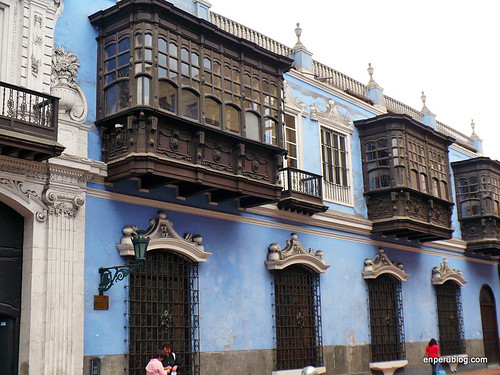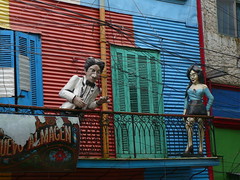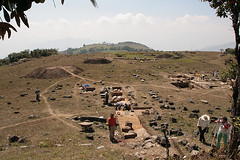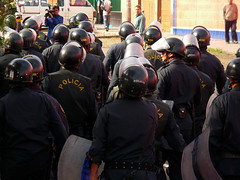Thousands of pedestrians fined as new transit code introduced
In an effort to curb a shocking number of traffic accidents in Peru’s major cities, authorities this week introduced the new Public Transit Code, a set of rules that fine pedestrians in order to enforce proper use of pedestrian crossings and other safety measures.
In Lima, where a third of the population lives, some 423 fatal accidents occur each year, this number doubling when other cities are taken into account. Of these, according to the statistics from the National Police, about 20% are caused by negligence on the part of the pedestrian.
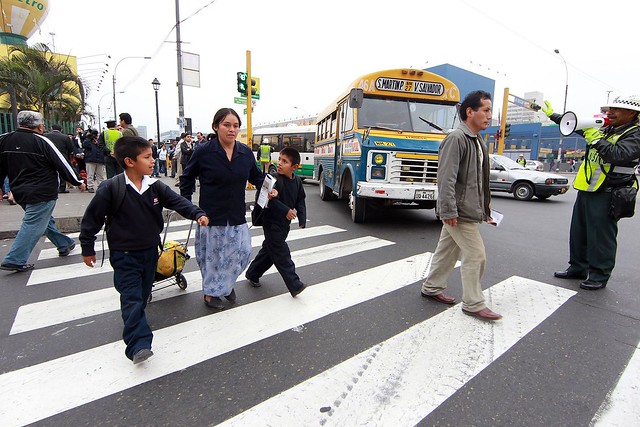
One family and one bus driver finally discover what the white lines are for
Many Peruvians think nothing of crossing a busy street rather than walk to the end of the block to an authorized crossing, even with their young children in tow. It is common to see street vendors walk among moving cars. On the major highways, such as the Panamerican, drivers transiting at high speed often have to dodge pedestrians who refuse to use the bridges intended to take them across safely – even cross the highway directly beneath the bridges themselves in an effort to gain a few seconds or to avoid having to climb stairs.
Regular deaths haven’t had an affect on this behavior, so authorities are hoping citizens care more about the safety of their wallet than the safety of their own lives with a series of fines ranging from S/.18 to S/.108 soles.
Behaviors to be penalized include crossing avenues without using established crossings, stepping out in front of cars, moving or otherwise, and walking long the side of the road.
Despite the amount of publicity the new laws received, as many as 1000 people were fined on just the very first day of enforcement in just a few key areas of the city including Av. Alfonso Ugarte in Central Lima, Óvalo Gutierrez in Miraflores, parts of Los Olivos and parts of Comas. Most of those fined were upset they were given no warning.
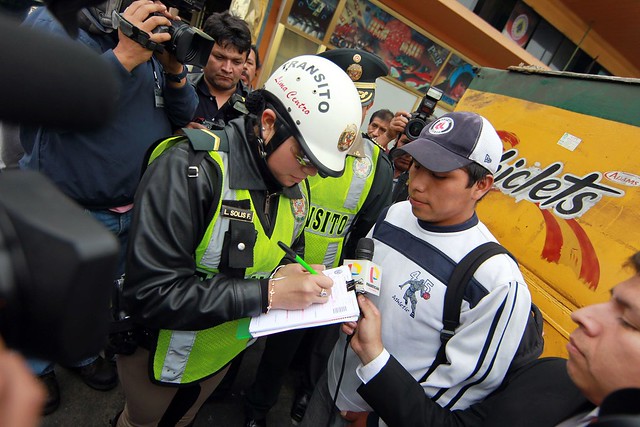
The very first fine – he attested to not knowing about the change in law
Over the next few days, some 200 transit police officers, pulled from other duties, will take part in the program they hope will quickly change behavior.
“We just want people to comply with the new code”, explained José Alvarado, chief of transit police, “we don’t want to have to fill the streets with police and jump on people’s backs”.
Transit laws were changed for drivers last year, increasing fines for various infractions and enforcing obedience with new fines on blocking pedestrian crossings, honking horns for no reason and dropping off passengers in intersections. After several days of strict enforcement, many drivers then continued driving recklessly
Critics complain that even the city of Lima, by far the wealthiest and most developed city, doesn’t have the infrastructure to make the fines fair or enforceable. Some districts don’t have adequate crossings or signage, construction and street repair works leave citizens with nowhere to go except onto the lanes of traffic. It is also considered pointless by some to have people cross at crossings when they are just as likely to be hit by fast-moving cars – no culture of pedestrian right of way exists in Peru, drivers refuse to let people cross and don’t think twice about running down those that try.




